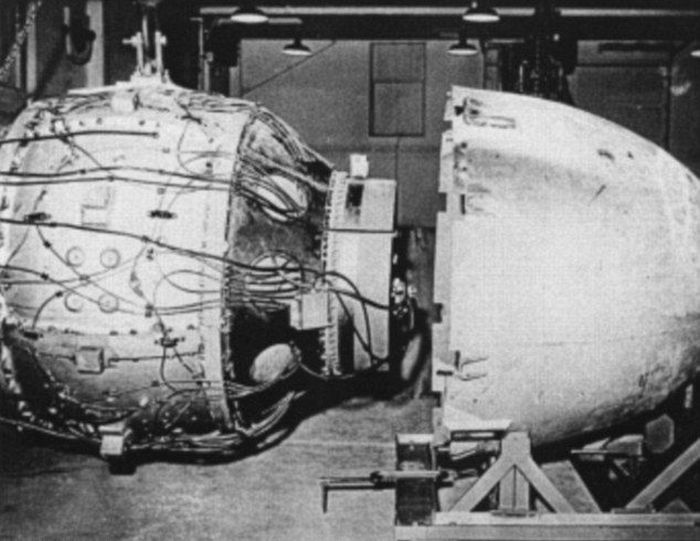|
|
History: Hours Before Atomic Bombing Of Hiroshima, August 6, 1945, United States
|
Hiroshima was the primary target of the first nuclear bombing mission on August 6, with Kokura and Nagasaki being alternative targets. August 6 was chosen because clouds had previously obscured the target. The 393d Bombardment Squadron B-29 Enola Gay, piloted and commanded by 509th Composite Group commander Colonel Paul Tibbets, was launched from North Field airbase on Tinian in the West Pacific, about six hours flight time from Japan. The Enola Gay (named after Colonel Tibbets' mother) was accompanied by two other B-29s. The Great Artiste, commanded by Major Charles W. Sweeney, carried instrumentation; and a then-nameless aircraft later called Necessary Evil (the photography aircraft) was commanded by Captain George Marquardt.
After leaving Tinian the aircraft made their way separately to Iwo Jima where they rendezvoused at 2,440 meters (8,010 ft) and set course for Japan. The aircraft arrived over the target in clear visibility at 9,855 meters (32,333 ft). During the journey, Navy Captain William Parsons had armed the bomb, which had been left unarmed to minimize the risks during takeoff. His assistant, 2nd Lt. Morris Jeppson, removed the safety devices 30 minutes before reaching the target area.
About an hour before the bombing, Japanese early warning radar detected the approach of some American aircraft headed for the southern part of Japan. An alert was given and radio broadcasting stopped in many cities, among them Hiroshima. At nearly 08:00, the radar operator in Hiroshima determined that the number of planes coming in was very small—probably not more than three—and the air raid alert was lifted. To conserve fuel and aircraft, the Japanese had decided not to intercept small formations. The normal radio broadcast warning was given to the people that it might be advisable to go to air-raid shelters if B-29s were actually sighted. However a reconnaissance mission was assumed because at 07.31 the first B29 to fly over Hiroshima at 32,000 feet (9,800 m) had been the weather observation aircraft Straight Flush that sent a morse code message to the Enola Gay indicating that the weather was good over the primary target and because it then turned out to sea the 'all clear' was sounded in the city. At 08.09 Colonel Tibbets started his bomb run and handed control over to his bombardier.
The release at 08:15 (Hiroshima time) went as planned, and the gravity bomb known as "Little Boy", a gun-type fission weapon with 60 kilograms (130 lb) of uranium-235, took 43 seconds to fall from the aircraft flying at 31,060 feet (9,470 m) to the predetermined detonation height about 1,900 feet (580 m) above the city. The Enola Gay had traveled 11.5 miles (18.5 km) away before it felt the shock waves from the blast.
|
|









